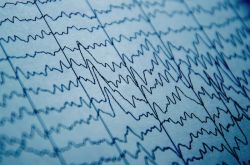Alpha waves bring calm without sleep and wakefulness without strain. Oscillating between 8 and 13 Hz, they are the key to a state of relaxed awareness that allows us to focus, feel safe, and perceive subtlety in a world full of input. This article offers a science-based insight into the alpha rhythm – and how it can be supported naturally.
When the Brain Breathes
Alpha waves are like a gentle inhale between doing and being. They dominate during states of relaxed wakefulness – when we close our eyes, slow our breath, or enter meditation. Alpha rhythms oscillate between 8 and 13 Hz and serve as a "gateway" between the outer world and inner experience.
They allow for sensory integration, creative insights, and overall calming of the mind. Consciousness remains active, but no longer driven by pressure or performance.
Neuroscientific Significance
Alpha activity is strongly linked to:
- relaxed attention and introspection,
- the brain’s ability to filter out irrelevant sensory input,
- coordination of communication between brain regions, especially the frontal and parietal lobes.
- supports concentration,
- reduces stress and anxiety,
- increases the likelihood of entering flow states.
In individuals with chronic stress, ADHD, or sensory overload, the alpha rhythm is often disrupted or poorly synchronized.
Therapeutic Potential
Alpha states are ideal for therapy – the client is open, yet not overwhelmed. At Light Brains, we intentionally support alpha activity through:
- warm, soft lighting
- sound frequencies around 10 Hz
- aromatherapy with citrus and conifer oils
- gentle touch, vibration, or guided relaxation
Conscious Tuning
Alpha is a state between worlds – between doing and being. It is not about performance, but presence. When the brain enters alpha, consciousness has space to perceive more subtly – the body, the inner world, and life itself.
Sources and Further Reading
- Klimesch, W. (1999). EEG alpha and theta oscillations reflect cognitive and memory performance. → A meta-analysis showing how alpha waves relate to attention, memory, and relaxation.
- Basar, E. (2012). Brain oscillations in neuropsychiatric disease. → Describes the role of alpha rhythm in anxiety, depression, and sensory overload.
- Foxe, J. J., & Snyder, A. C. (2011). The role of alpha-band brain oscillations as a sensory suppression mechanism during selective attention. → Alpha waves act as a sensory gate that filters distractions during cognitive tasks.
- Hanslmayr, S., et al. (2007). Prestimulus oscillations predict visual perception performance. → Alpha activity before a stimulus predicts sensory processing quality – key for multisensory work.
- Laufs, H., et al. (2003). EEG-correlated fMRI of human alpha activity. → Shows how alpha rhythm correlates with activity in the brain's default mode network.





